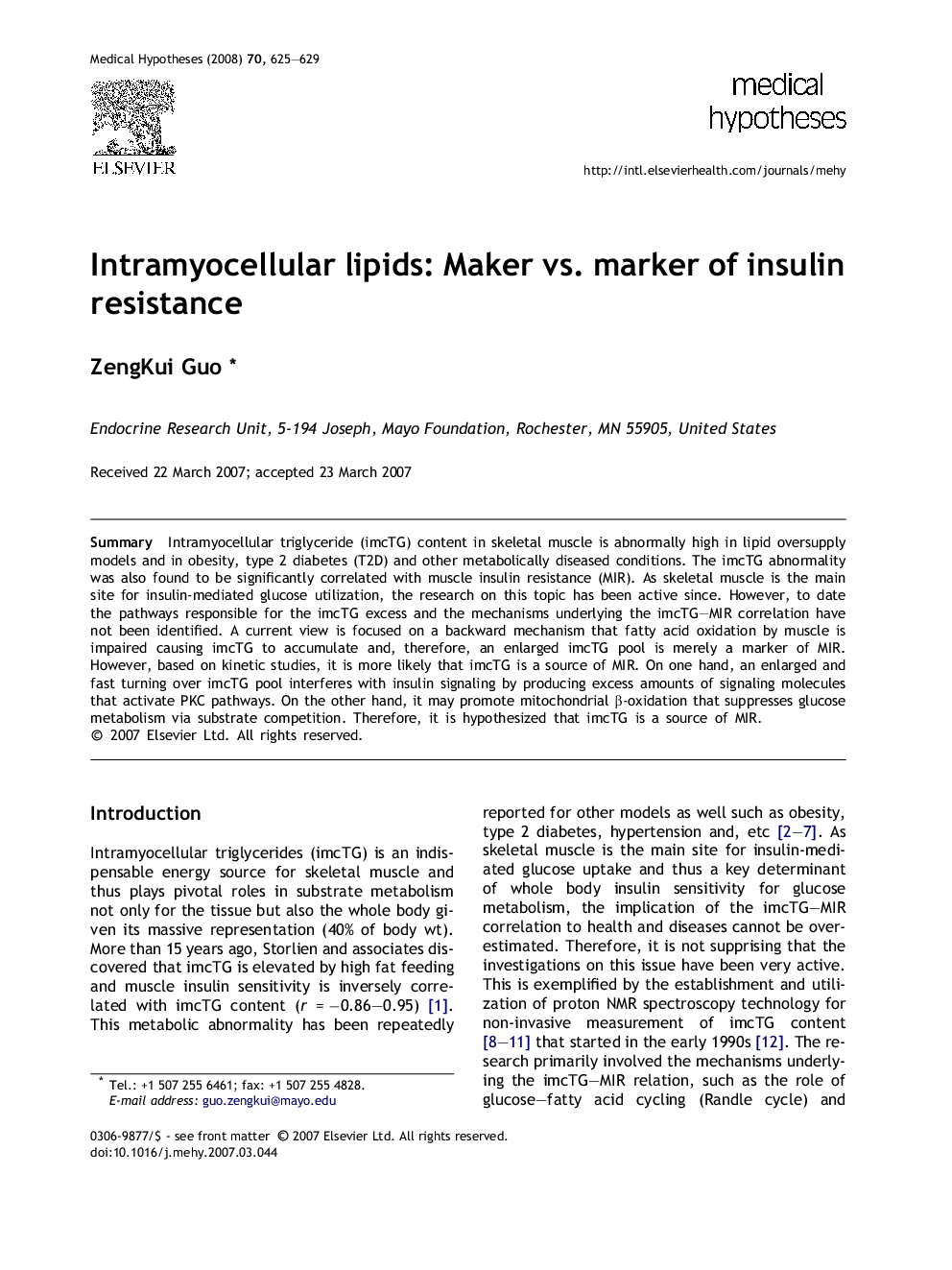| Article ID | Journal | Published Year | Pages | File Type |
|---|---|---|---|---|
| 2491075 | Medical Hypotheses | 2008 | 5 Pages |
SummaryIntramyocellular triglyceride (imcTG) content in skeletal muscle is abnormally high in lipid oversupply models in obesity, type 2 diabetes (T2D) and other metabolically diseased conditions. The imcTG abnormality was also found to be significantly correlated with muscle insulin resistance (MIR). As skeletal muscle is the main site for insulin-mediated glucose utilization, the research on this topic has been active since. However, to date the pathways responsible for the imcTG excess and the mechanisms underlying the imcTG–MIR correlation have not been identified. A current view is focused on a backward mechanism that fatty acid oxidation by muscle is impaired causing imcTG to accumulate and, therefore, an enlarged imcTG pool is merely a marker of MIR. However, based on kinetic studies, it is more likely that imcTG is a source of MIR. On one hand, an enlarged and fast turning over imcTG pool interferes with insulin signaling by producing excess amounts of signaling molecules that activate PKC pathways. On the other hand, it may promote mitochondrial β-oxidation that suppresses glucose metabolism via substrate competition. Therefore, it is hypothesized that imcTG is a source of MIR.
